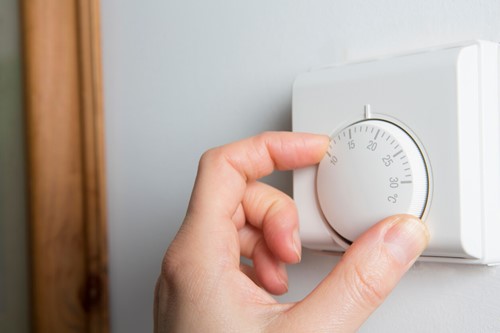6 electric bike storage tips for winter

Though technically, nothing is stopping you from riding your e-bike throughout winter, many people choose to call it a day for the year and wait until spring to get back out on the road.
Not only are electric bikes more susceptible to things like water damage during the winter, but bike batteries can also lose capacity in colder weather, which can limit the distance you can ride.
Knowledge of correct electric bike storage is essential if you’re packing up for the year, and we’ve got you covered.
Here are a handful of electric bike storage tips you may want to consider ahead of winter.
Remove the battery and keep it inside
If you can’t keep the entire bike inside during winter, you should at least remove the battery and keep it somewhere at normal room temperature.
Many e-bike batteries contain a gel which can stiffen up in colder temperatures—meaning the battery isn’t able to take as much charge, thus hampering your bike’s overall performance.
So, if you’re not going to be riding for a while, the best thing to do is remove the battery and keep it inside.
You shouldn’t let your e-bike battery completely drain down, either, even when just in storage. If batteries are left to run out, power capacity can reduce over time. So, keep an eye on your battery levels throughout winter and try to keep the charge somewhere between 30-60%.
You’ll thank yourself come spring.
Related: E-bike battery maintenance—Richard Peace’s top 5 tips for looking after your e-bike battery
Store it clean and dry

Obvious it may seem, it’s easy to fall into bad cleaning habits when not riding your bike regularly. That said, you should thoroughly clean your electric bike before putting it into storage for the winter.
Start by cleaning any dirt from the frame (avoiding jet washers) and wiping it down with a cloth to dry. Then, ensure the battery contact points are also clean and dry, as long periods exposed make them susceptible to corrosion. It’s also a good idea to apply a fresh coating of lube to the chain.
Your e-bike must be completely dry before it goes into storage. Excess water anywhere on the bike will accelerate rust and give you a nasty surprise a few months down the line.
Related: How to prevent your bike from rusting
Use a cover

Using a cover is another good electric bike storage tip, especially if you keep your bike outside.
Electric bike covers have many benefits, but perhaps most importantly—they protect your bike from the elements (such as torrential rain, heavy snow, or harsh sunlight) and deter potential thieves.
Even if you keep your e-bike inside during winter, a cover is still a useful piece of protective equipment to have. They can prevent a build-up of dust, scratches, and scuffs from other items you may also have with them in storage.
However, if you don’t feel the need to cover the entire bike, you can also get saddle-only covers (as pictured above).
Related: The best bike covers to protect your ride from the elements
Regulate the temperature

We touched on this earlier, but regulating the room temperature is particularly important when storing your e-bike battery.
Even the slightest drop (or rise) in temperature can impact the performance of your battery long-term, so keeping an eye on the thermostat during winter is key.
The ideal temperature range for an electric bike battery is normally between 10-25˚c. You should try to avoid going any higher or lower than this.
Related: Best temperatures for electric bike battery storage, usage, and charging
Invest in a rack or wall mount

Yes, we know that’s not strictly an electric bike pictured above—but you get the point.
Wall mounts can be a lifesaver for electric bike storage if you aren’t particularly blessed with space where you live.
Not only do they free up valuable space where it’s already limited, but wall mounts and racks can also help protect your bike from damage on the ground.
Available for use both indoors and out, they’re a good investment for winter. If that wasn’t enough, they also look pretty smart, too.
Related: 10 bike wall mounts that you can buy in the UK in 2022
Remove gadgets and lock up

As well as the battery, you should also remove any other gadgets you might have on your e-bike if you’re storing it outside during winter.
Lights, GPS trackers, spare parts—you name it—these additional bits and pieces are usually worth quite a lot of money, and so make your e-bike more attractive to thieves when left in storage.
The best thing to do is remove them along with the battery and store them separately—especially if you aren’t using a cover.
Again, it might also sound obvious—but your e-bike should also be locked up in storage where possible. If your e-bike is not locked, you’ll face difficulties further down the line should you need to make a claim on your insurance.
Related: How to protect your e-bike from theft in 6 easy steps
No matter how savvy you are with electric bike storage this winter, you might also want to consider electric bike insurance as another layer of protection.
With Cycleplan, specialist electric bike insurance protects your e-bike against theft, loss and accidental damage up to £30,000.
We also offer Public Liability up to £5m and protection against personal injuries. All Cycleplan policies are also underpinned by the ‘Ripe Guarantee’, meaning you won’t find the same level of service and electric bike insurance for a better price anywhere else on the market.
Click here to learn more about specialist electric bike insurance with Cycleplan and get a quick online quote today.
Related
7 electric bike maintenance tips
5 reasons why you need specialist e-bike insurance
The 7 best electric bikes for kids in 2022






